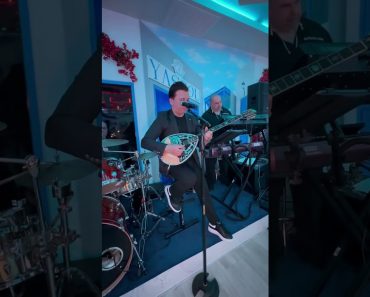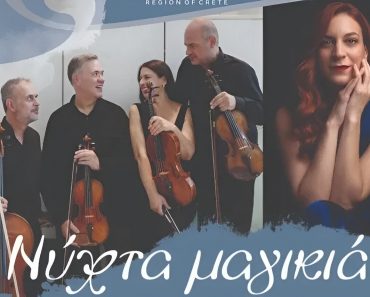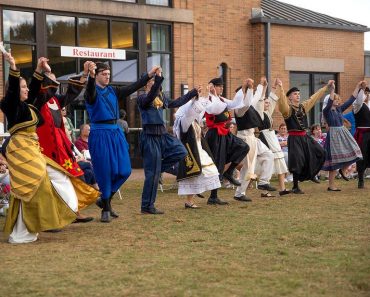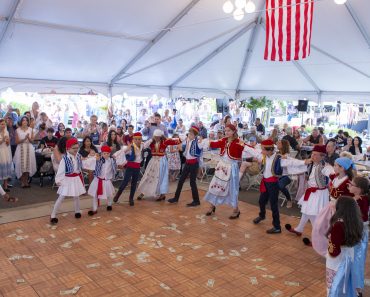In 2011, travelling through Patagonia in his home country of Argentina, Bruno Bosio heard a live band comprised of Argentinians and Chileans playing flutes, maracas and drums.
Bosio was a musician who played blues and and jazz and other music, but hearing this group playing a version of cumbia – a type of music with rhythms that originated in Colombia – he was moved.
“I was really impressed, and really that music touched my heart. And I said, OK, one day I will learn how to play flutes. I will learn these rhythms, and I will make a band like this in my hometown.”
He eventually did that, first in his Argentinian home town, and then in his new home town of Nelson.
Bosio’s Nelson-based band, the Quilombera Afrocolombian Ensemble — which also features Kateryna Melnyk (lead singer, from Ukraine), Maria Luisa Piñeda (vocals and djembe, from Mexico), Edisson Fuquene (tambora, from Colombia), Clara Marcela Cano (llamador, from Colombia), and Jani Latakos (congas and djembe, from Hungary) – filled The Royal and its dance floor on July 17. The dancing started with the first song – an early sign of an inspired evening to come, said Melnyk.
“I was really happy and content,” she said. “When you are just living in this moment, when you are just living with the music and with the process so much, it was amazing. And it was amazing how many people showed up. This gave us so much energy and so much more motivation for the next shows and for the next year.”
Melnyk and Bosio are a couple who lived and played together in Spain and Argentina before coming to Canada. They first tried the Okanagan, then settled on Nelson because it was just what they wanted: a small city, not too busy but with many artists and cultural events.
Cumbia, which features lots of percussion plus flutes, maracas and sometimes other instruments, originated on the Caribbean coast of Colombia and has spread, with many regional variations, throughout Latin America.
Bosio says cumbia “connects all the countries from Mexico to Argentina.”
In Quilombera he plays a traditional Indigenous flute from Colombia called a kuisi. He said Indigenous people from the Colombian coast were playing this flute before Europeans brought slaves from Africa.
“Indigenous people and African slaves, they met, and they started to share their cultures. Africans brought the rhythms and Indigenous were playing flutes, and they created cumbia and these different Afro-Colombian rhythms.”
Bosio is fascinated by how a rhythm can originate in one country, then move to another and change, creating something new.
“I love how the music is spread in the world. We are trying to develop our project with traditional songs and also with our own songs. And that’s something we are adding to Afro-Colombian music because we are creating our own songs with our backgrounds.”
Melnyk said she used to wonder if someone with her Ukrainian ancestry could convincingly sing cumbia. But she has sung Middle Eastern and Greek music in her career, and she has found that people are proud that singers from different parts of the world want to perform their songs.
“In my case, I sometimes I know that I don’t sound native. I don’t want to sound like people there. That’s why we are people in our band from all the different countries. We are not trying to pretend we are something else. And I think this is what makes the band beautiful, is this internationality, and that is the spirit of Canada as well, and it’s my spirit too. … The music is all about experimenting and mixing and trying to create something new.”
Melnyk said early in her learning of Afro-Colombian music she noticed some similarities with the techniques of singing certain types of Ukrainian traditional music.
“And I thought, oh my God, it’s like Ukrainian music. I can think this way.”
One of the Colombians in Quilombera, Clara Marcela Cano, feels at home playing Colombian music with people from other countries.
“I feel so proud,” she said, “because cumbia represents Latin America. But the original roots of cumbia are from Colombia and the original roots are from Africa. But Colombia is where cumbia was born.
“Colombia is a very musical country that is not only cumbia, but so many rhythms. It’s beautiful, and we love it.”







